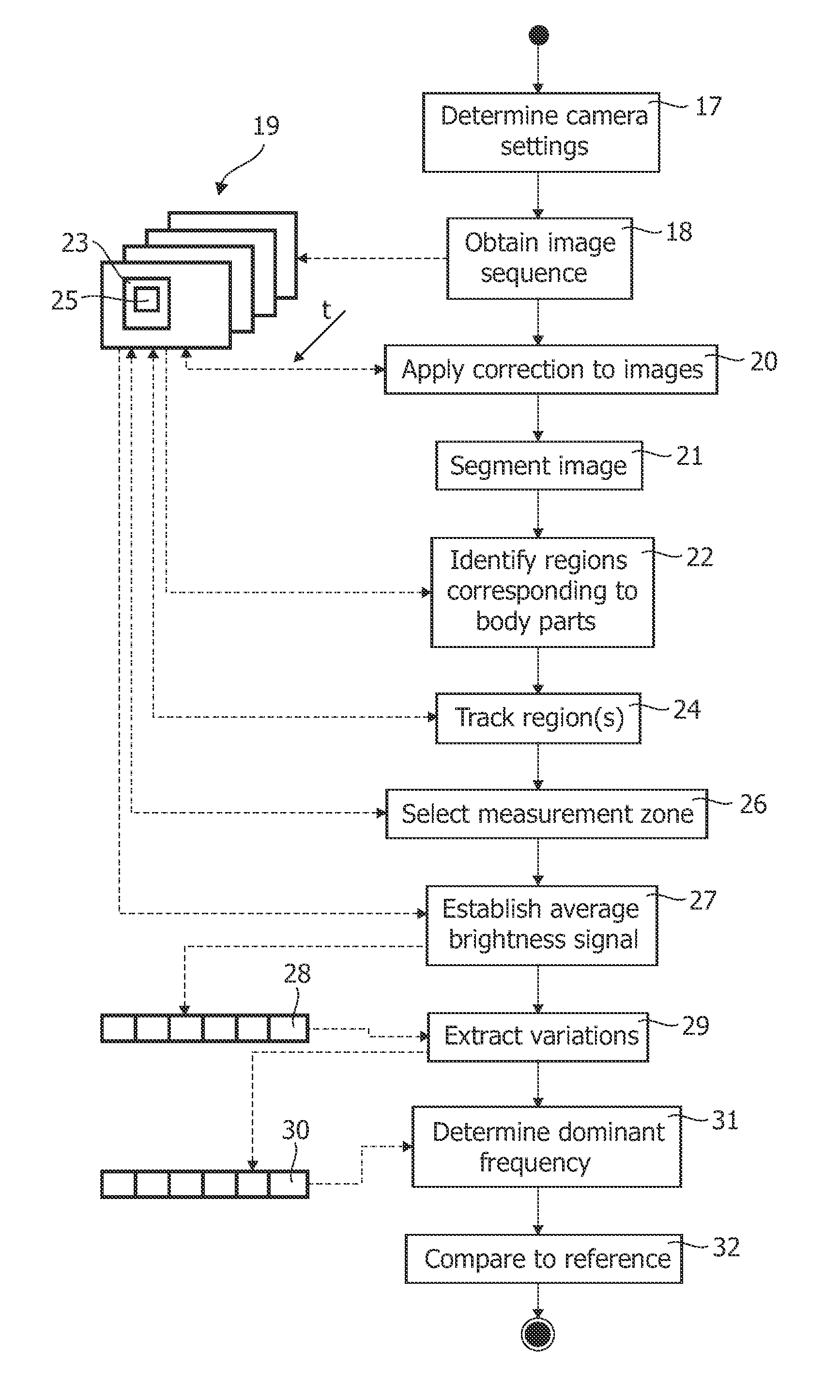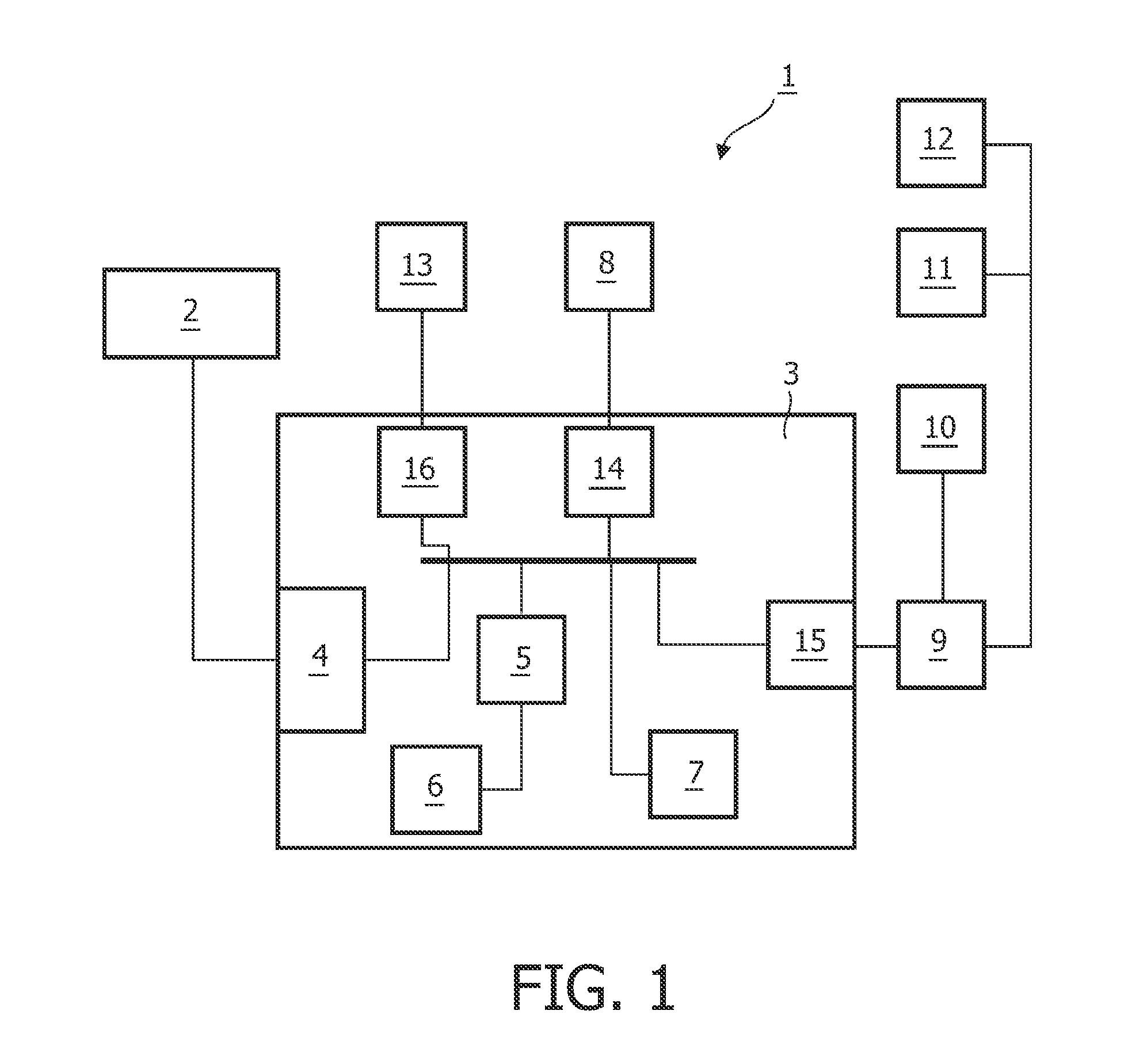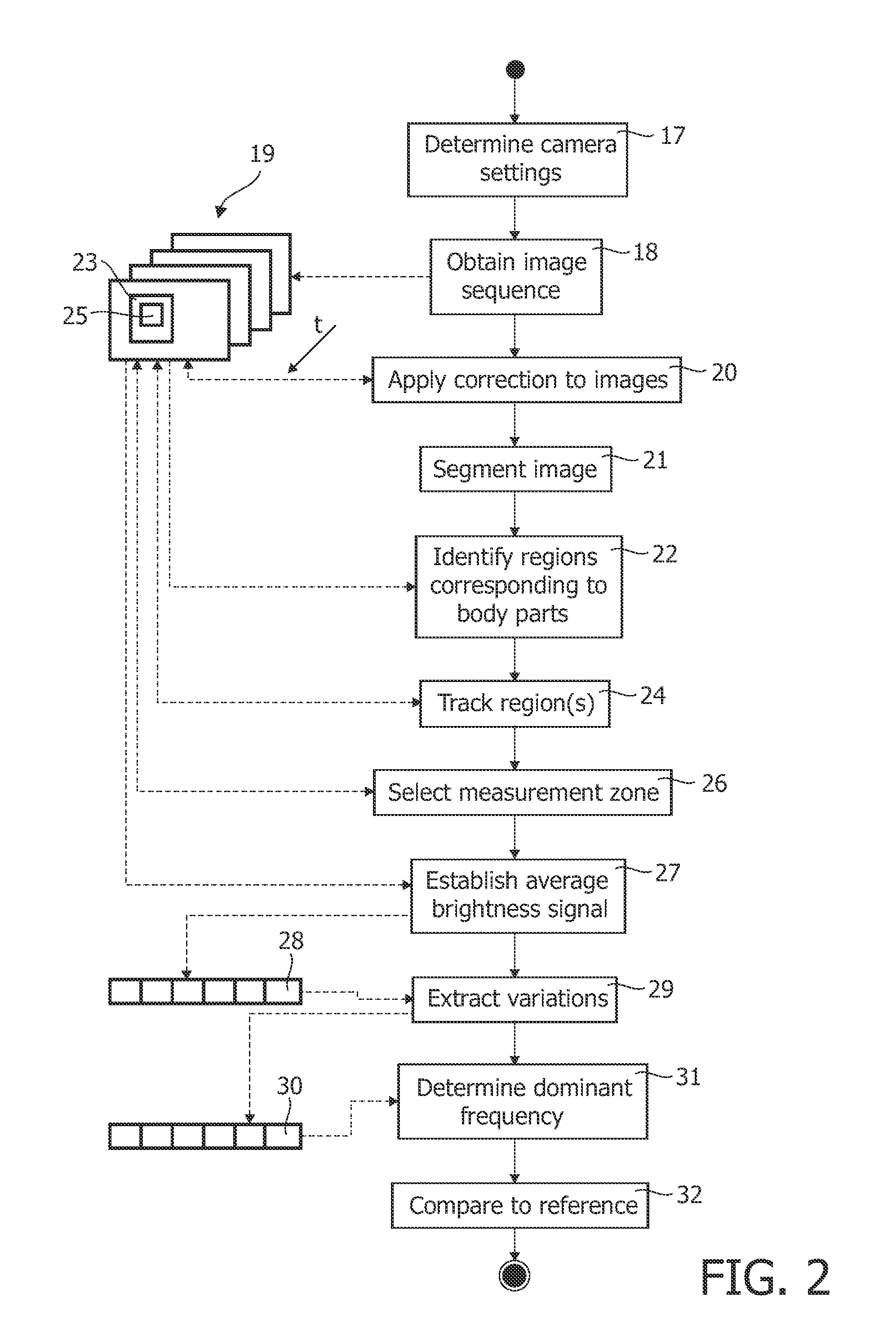Method of controlling a function of a device and system for detecting the presence of a living being
a technology of living beings and functions, applied in the field of controlling the function of a device and a system for detecting the presence of a living being, can solve the problems that the application of photoplethysmography known from the prior art is limited to diagnostics, and achieve the effect of improving the signal to noise ratio of signal components
- Summary
- Abstract
- Description
- Claims
- Application Information
AI Technical Summary
Benefits of technology
Problems solved by technology
Method used
Image
Examples
Embodiment Construction
[0053]Referring to FIG. 1, an example is given here of a system 1 that is arranged to process a sequence of images. The system 1 carries out this processing in order to determine at least one of the presence and a frequency value of at least one peak in a spectrum of a signal based on the pixel data of the images corresponding to a frequency of a periodic physiological phenomenon. In certain embodiments, the presence of a living being is inferred from the presence of the peak, and used as a binary input for one or more system processes. The frequency of the peak is used as an input in at least one of those processes. In other embodiments, the presence of several different living beings is inferred. In one embodiment, this information is used as an input to an image segmentation method. In another embodiment, this information is used to provide spatially targeted feedback.
[0054]The system 1 includes a digital camera 2 arranged to record a sequence of digital images in quick successio...
PUM
 Login to View More
Login to View More Abstract
Description
Claims
Application Information
 Login to View More
Login to View More - R&D
- Intellectual Property
- Life Sciences
- Materials
- Tech Scout
- Unparalleled Data Quality
- Higher Quality Content
- 60% Fewer Hallucinations
Browse by: Latest US Patents, China's latest patents, Technical Efficacy Thesaurus, Application Domain, Technology Topic, Popular Technical Reports.
© 2025 PatSnap. All rights reserved.Legal|Privacy policy|Modern Slavery Act Transparency Statement|Sitemap|About US| Contact US: help@patsnap.com



